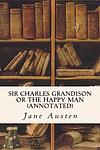Samuel Richardson
Samuel Richardson was an 18th-century English writer and printer. He is best known for his three epistolary novels: 'Pamela, or Virtue Rewarded' (1740), 'Clarissa, or the History of a Young Lady' (1748), and 'The History of Sir Charles Grandison' (1753). Richardson's work was a significant influence on the development of the novel as a literary form, and he is often considered one of the earliest and most important novelists in the English language.
Books
This list of books are ONLY the books that have been ranked on the lists that are aggregated on this site. This is not a comprehensive list of all books by this author.
-
1. Clarissa
The novel revolves around the beautiful and virtuous Clarissa Harlowe, a young woman from a wealthy family who is pursued by the villainous Robert Lovelace. Despite her attempts to maintain her virtue and independence, she is tricked into running away with Lovelace and is subsequently held against her will. Lovelace's relentless pursuit and Clarissa's steadfast resistance culminate in her tragic end, making the novel a complex exploration of power, morality, and the vulnerability of women in society.
-
2. Pamela
"Pamela" is a novel that tells the story of a 15-year-old maidservant named Pamela whose employer, Mr. B, makes unwanted advances towards her after the death of his mother. Pamela is determined to protect her virtue and repeatedly rejects his advances. This leads to a series of events, including her attempted escape, kidnapping and imprisonment. Ultimately, impressed by her virtue and integrity, Mr. B reforms and proposes marriage to her, elevating her to a higher social status. The novel is a pioneering work in the genre of the novel and is noted for its detailed psychological insight into the characters.
-
3. Sir Charles Grandison
The novel revolves around the character of Sir Charles Grandison, an ideal English gentleman who navigates the complexities of social expectations and personal virtue. He is admired for his integrity, benevolence, and sense of honor, qualities that make him the object of affection for several women. The story unfolds through a series of letters, primarily between the virtuous Harriet Byron, who falls in love with Sir Charles, and her correspondents. The narrative explores themes of morality, marriage, and the roles of men and women in 18th-century society, as characters grapple with their emotions and the challenges posed by family obligations, romantic rivalries, and societal pressures.


